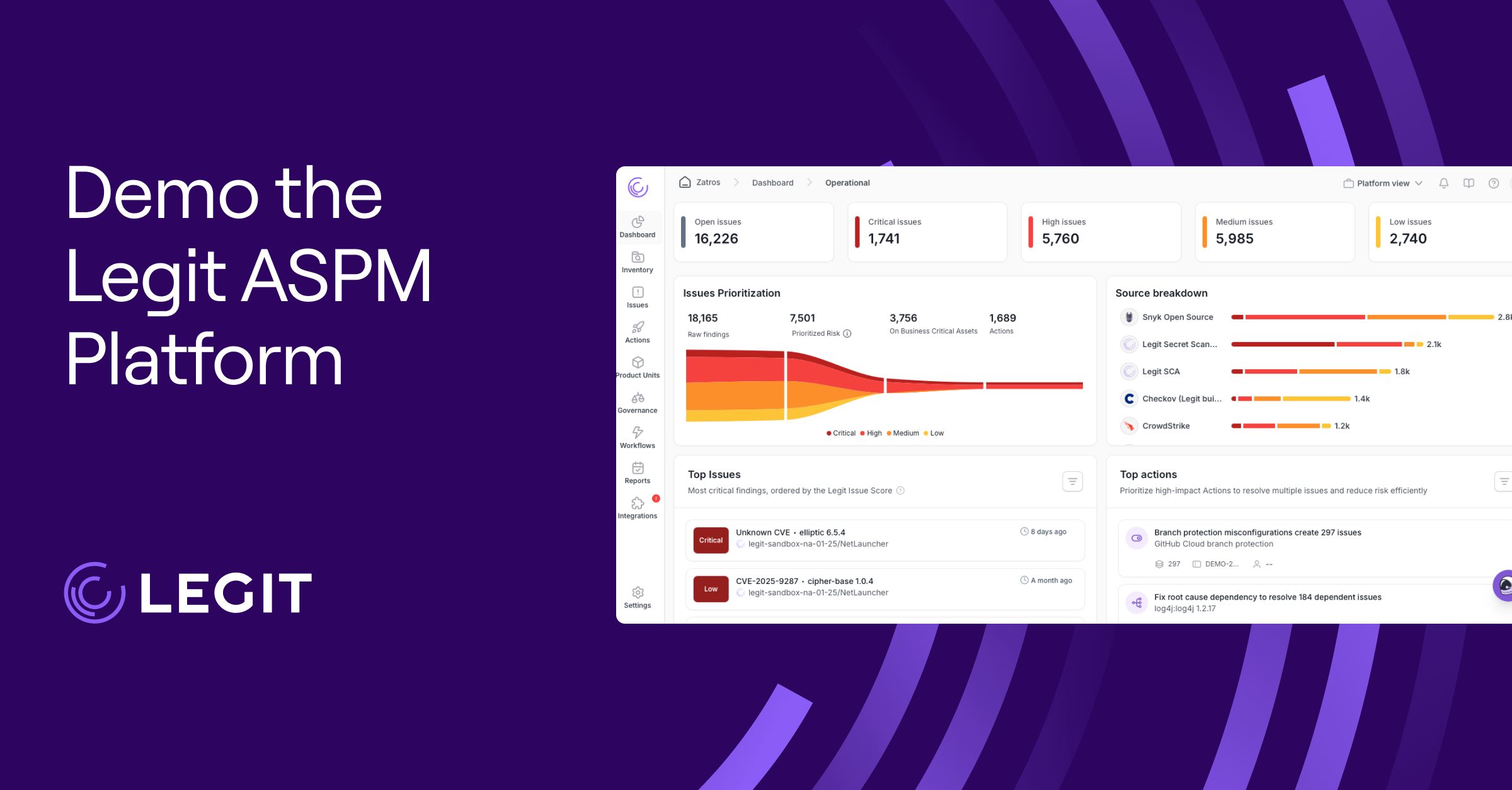Modern software development uses open-source components to save time and resources. But with that efficiency comes security issues. Open-source code can carry vulnerabilities or licensing issues that put your software—and the sensitive data it handles—at risk.
Software composition analysis (SCA) can help. SCA tools scan your software to identify and address potential problems, keeping your software supply chain secure and compliant.
What Is Software Composition Analysis?
SCA scans your software’s open-source components to create a detailed inventory, often called a software bill of materials (SBOM). It identifies direct and indirect dependencies, checks for outdated libraries, and flags licensing conflicts or vulnerabilities. These insights let developers and security teams act on risks early, keeping projects on track and secure.
Benefits of Software Composition Analysis
Modern software applications depend heavily on open-source components, and each of them has its own dependencies and potential risks. Managing these components and their data is nearly impossible because the software development lifecycle (SDLC) is long and complex—especially when it comes to identifying security vulnerabilities, maintaining code quality, and ensuring license compliance.
SCA tools simplify this process by generating SBOMs, providing visibility into open-source dependencies. This helps organizations secure their applications while streamlining the SDLC. And for those embracing DevOps practices, SCA makes security an integral part of the process, allowing teams to deliver secure, high-quality software faster. By bridging the gap between security and development, SCA tools make addressing risks a shared responsibility across teams.
How Does Software Composition Analysis Work?
SCA works by scanning your codebase, cataloging components, and cross-referencing them with standards and regulations. Here’s the step-by-step:
- SCA tools scan your code to identify all the open-source components and dependencies.
- They then organize these components into an SBOM to provide a clear view of their usage in your software. This step ensures nothing goes unnoticed, including indirect dependencies often buried deep within the supply chain.
- SCA software checks each component against regularly updated vulnerability databases, such as the National Vulnerability Database (NVD) and licensing repositories. They assess components for known security vulnerabilities, deprecated versions, and licensing conflicts.
- Some tools also evaluate the risk level by analyzing how these components interact within your application, prioritizing issues based on severity and potential impact. Many suggest updates, patches, or alternatives for affected components while providing actionable guidance to mitigate risks.
- The final step involves integrating these insights into your workflow. Modern SCA tools plug directly into development environments, CI/CD pipelines, or source control systems, delivering alerts and actionable reports in real time.
Risks of Using Open-Source Components
Open-source components are a cornerstone of modern software development, but they come with inherent security risks.
Many open-source projects come from small teams or volunteers with limited resources, potentially delaying critical updates or patches. This lack of centralized oversight increases the chances of vulnerabilities going unnoticed or unresolved, exposing applications to potential exploitation.
Open-source libraries can also become obsolete when maintainers abandon the project or fail to keep it updated. Relying on outdated components introduces compatibility issues and exposes your software to known security flaws.
Licensing further complicates the usage of open-source software. Some licenses impose obligations, such as disclosing modifications or restricting commercial use, which can create legal challenges if overlooked. Without proper license management, organizations risk violating terms, potentially resulting in costly consequences.
How to Choose a Software Composition Analysis Tool: 5 Factors
To make an informed decision on the SCA tool for you, focus on the features and capabilities that align with your organization’s unique needs and priorities. Here’s what to look for:
1. Developer-Focused
Any tool should integrate seamlessly into your team’s existing workflows, enhancing productivity rather than hindering it. Look for tools with features like IDE plugins or Git integrations that allow you to identify and fix real-time vulnerabilities within your development environment. By prioritizing a frictionless experience, these tools don’t distract developers.
2. Smooth CI/CD Integration
Your SCA tool should align with CI/CD pipelines for continuous security monitoring. This integration encourages early vulnerability detection, preventing gaps and mistakes from reaching production.
A well-integrated tool also streamlines the remediation process, allowing developers to address risks without disrupting deployment schedules or compromising release timelines.
3. Accurate and Actionable Detection
False positives can waste valuable time, so choose an SCA tool known for its precision. The ideal tool doesn’t just flag vulnerabilities—it provides actionable recommendations, such as specific updates, patches, or alternatives, to resolve issues quickly. This reduces overhead while empowering teams to focus on high-priority risks.
4. Ecosystem and Language Support
The best SCA tools are flexible enough to support the programming languages and environments your organization relies on. Whether you’re working with containerized applications, infrastructure-as-code (IaC), or legacy systems, the tool should adapt to your tech stack without requiring additional configurations or workarounds.
5. Reporting and Automation
Choose a tool that generates detailed, customizable reports outlining vulnerabilities, licensing issues, and remediation steps. Those with built-in automations—like license policy enforcement or vulnerability prioritization—save time and simplify compliance processes for large teams.
For organizations working in regulated fields, detailed reports make audits easier and show that they’re meeting security standards like the Payment Card Industry Data Security Standard (PCI DSS) and the National Institute of Standards and Technology (NIST).
Complement Your SCA With Legit Security
The Legit ASPM Platform acts as the foundation of your application security program, ensuring all your testing, including SCA, is more effective and efficient. Legit discovers and visualizes all aspects of both applications and the software factory producing these assets, plus all security controls and gaps. Further, it consolidates security findings across all your scanners and tools (i.e., SCA, SAST, DAST, etc.), leveraging AI-driven correlation and risk scoring to fix your most critical issues, first.
Request a demo today.
Download our new whitepaper.


